Excerpts from Jim Conrad's
Naturalist Newsletter
Entry dated May 1, 2024, issued from near Tequisquiapan; elevation about 1,900m, (6200 ft), ~N20.57°, ~W99.89°; Querétaro state, MÉXICO
FEMALE TRAPDOOR SPIDER
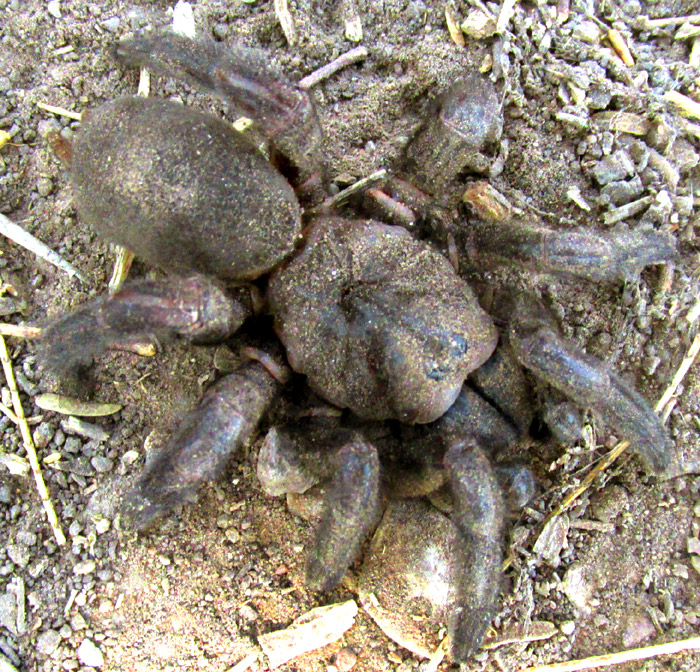
In mid morning at the center of a footpath through the scrub and keeping quiet in a patch of shade, I thought the above spider was a smallish species of tarantula. Usually tarantulas are hairier than this, such as the Mexican Redrump, but old tarantulas often wear off some hairs.
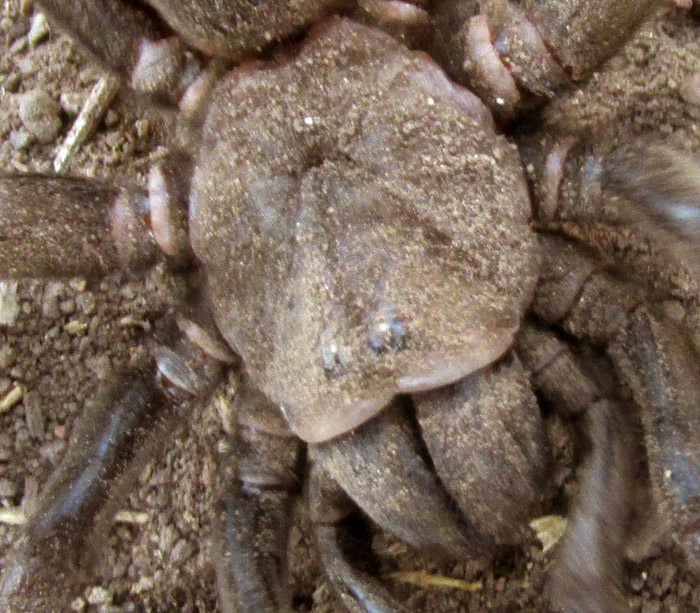
For identification, I paid close attention to the relative size and shape of the covering, or carapace, of the body segment behind the face, the cephalothorax. The position of the dimple, or fovea, was a little behind the carapace's center, and the carapace's rim at the body front was pale along the edge and indented. The two broad, downward curving items below the rim are chelicerae, commonly referred to as "jaws." They house venom glands and fangs.
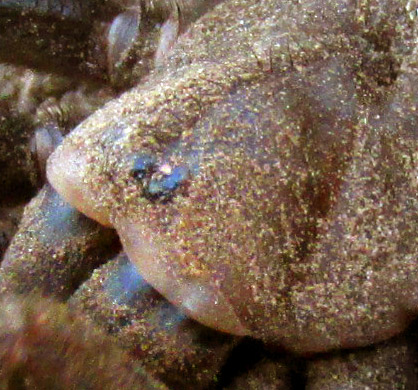
Noticing the arrangement of the eyes was important, too. At the right it's seen that six of the eight eyes are arranged in a V shape. My jockeying for position to take that picture upset the spider, who reared her front part up, suggesting she was ready to fight, shown below:
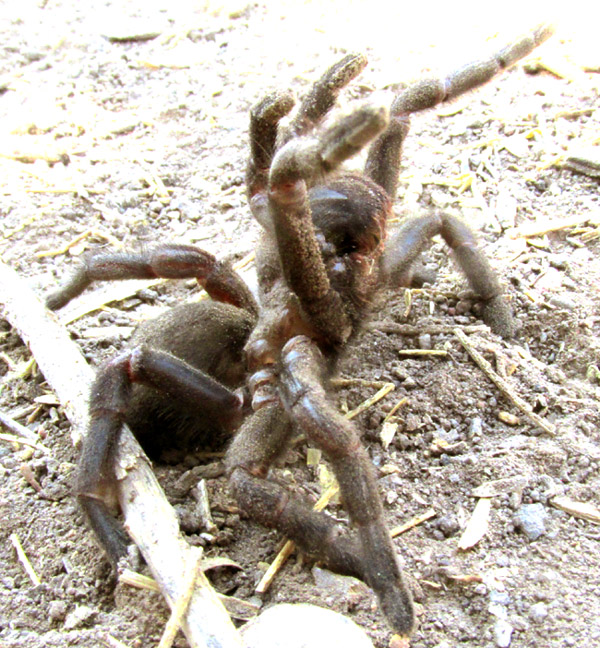
This stance afforded a close look at her front leg, on which the nature and disposition of the hairs later would be important to notice:
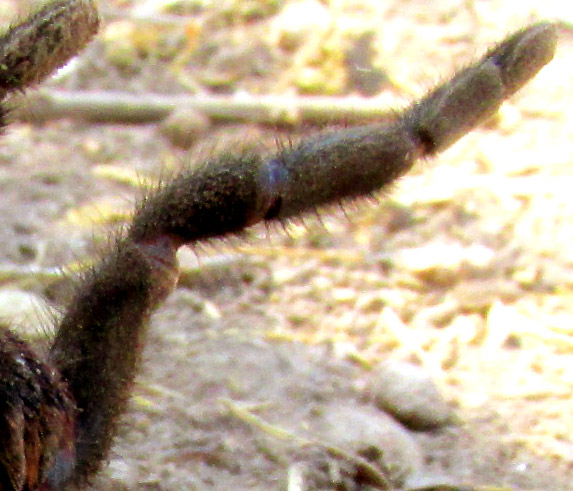
I couldn't match our spider to any tarantula species likely to occur in upland central Mexico. Thinking it might be something special, I asked a tarantula expert at UNAM, Mexico's main university, in Mexico City, if he wanted to see my pictures. He did, and quickly replied that it wasn't a tarantula at all, but rather a trapdoor spider of the genus Eucteniza, and a female, as well.
Trapdoor spiders, occurring mostly in deserts and tropical dry forests in Mexico and Texas, are closely related to tarantulas. They're different from tarantulas, who roam about hunting, in that they construct hinged little wafer or cork-like doors at the entrances to their underground burrows, then wait in their burrows until prey passes along, at which point they they rush out and snatch it. Few trapdoor spider species have been studied seriously and their taxonomy is unclear. I was fortunate to be told we had a female in the genus Eucteniza.
Also I was lucky to find the 2013 study by Jason Bond and Rebecca Godwin intitled "Taxonomic revision of the Trapdoor spider genus Eucteniza Ausserer (Araneae, Mygalomorphae, Euctenizidae)." In that beautifully illustrated work with a map showing where each of the genus's 15 species recognized in 2013 occurs, I was to read that most species have been described based on relatively little material, and most species are known only from male specimens. Identification pictures in the work focus on the nature and disposition of hairs on the front legs of males, on which certain hairs are much larger and stiffer than others. Front legs on females like ours don't possess such specialized hairs, and that hindered identification.
By far the most widely distributed and best documented Eucteniza species is Eucteniza relata, distributed from central Texas to south-central Mexico, which includes our area. Thus a good guess would be that we have a Eucteniza relata. However, the authors remark that "Without doubt this species, as circumscribed herein, represents multiple species, likely cryptic." Cryptic species are morphologically identical to other species, but with genes indicating that they're not the same.
Therefore, the best we can say about our trapdoor spider's identity is that it's one of several species of Eucteniza, and quite possibly one unknown to science, but no one really knows.